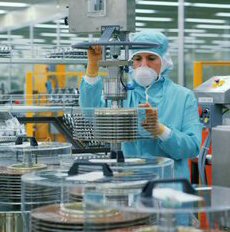Equipment loans are used to finance business vehicles, tools, fixed assets, and large computer systems. The equipment can be new or used. If new equipment, the loan can be for the total amount of the purchase. Used equipment is often 75% of the current cost of the equipment. It is easier to finance equipment that has a strong resale market (such as trucks) than specialized equipment with little resale use. Even though the equipment will be used as collateral, borrowers still need to show they can repay the loan. They must provide business financial statements and business tax returns. Sometimes borrowers may be required to personally guarantee the loan.
Difference between equipment loans and leases
Equipment loans and equipment leases are different. At the end of a loan, you own the equipment. At the end of a lease, you return the equipment and presumably start the lease process again. For bookkeeping purposes, if you have a loan, you put the asset and loan on your balance sheet. If you have a lease, you do not put them on your balance sheet, the lease payments are strictly operating expenses. In both cases, if you don't make payments, the lender (or leaseholder) will repossess the equipment. Information from the Equipment Leasing and Finance AssociationThe Equipment Leasing and Finance Association has developed Equipment Finance 101, with information on the benefits of equipment leasing, finance types, and loan/lease comparisons. Click here to go to Equipment Finance 101 Advantages and disadvantages of equipment loans
Advantages
- You can actually earn money if the income generated by the equipment exceeds the payments.
- Usually, you do not have to use personal collateral or guarantees to obtain the loan.
- The loan matches the economic life of the equipment so you can use the earnings from the equipment to pay for the loan.
- Equipment loans are a good way for businesses to establish credit.
- You can get a (partial) loan on used equipment, but probably cannot lease used equipment.
- Equipment purchases (not leases) can be used as Section 179 federal tax deductions. You can deduct the entire purchase in the first year, even though you pay for it over several years.
- If obsolescence is a problem, leasing may be a better option. That way you are not stuck with trying to dispose of an obsolete asset.
- If you plan to upgrade equipment, leasing may be a better option.
- The loan is based on each piece of equipment that you purchase; so you must go through the same approval process with each new purchase.
- Lease equipment when you expect the equipment to improve in the next few years and you want to trade-in for the new product.
- Buy equipment when the equipment is established, when you want immediate tax write-offs, or when the life of the equipment will extend beyond the financed years.
- Use the lease/buy calculator to compare actual costs.
- Insure the equipment.
- Provide training on how to use the equipment safely.
- Maintain the equipment (leases often require a maintenance agreement).





